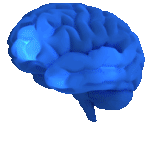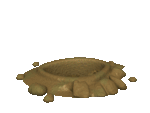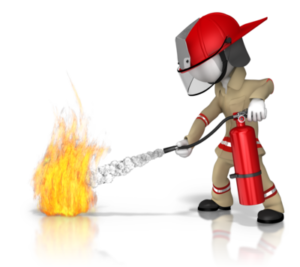
Can you believe it? Today is Monday, April 11, 2016. Winter and the month of March are officially over. We are ten days past the traditional April Fools’ Day of April 1. So this post and the four announcements contained in it are no April Fools’ Joke. You can trust them. They are for real! Some of the announcements are not as positive as I would have liked. However, they definitely represent a positive movement that was much in doubt through most of the past year. So without further ado, let’s get right to the announcements.


This first announcement concerns my health. It is a positive announcement since we made it past March and I didn’t have any new health setbacks. In previous posts I have explained that in each March since March 2009, I have spent at least one week in a hospital with some major medical problem.
However, since last Thanksgiving, I don’t think that I have fully explained to my blog audience my current experiences. In the week before Thanksgiving, I started feeling sets of two or three, very quick 120-volt, low-amperage electric shocks in many different areas of my body. After the shocks stopped, I would then feel a burning sensation at the location of the shocks which would last from a few seconds to almost a minute. The burning sensation would then take off, traveling a nerve path to another spot in my body. The burning sensation would settle in that spot and then morph into a normal type of pain for that location. For example, I would get three shocks, followed by a burning sensation in my left shoulder blade. After a short period of time, the burning sensation would travel up through my shoulder, down my arm, past my wrist and the back of my hand, before settling in the large knuckle of my left index finger. At this point, the burning sensation would change into an arthritic pain, which would last until I could work it out by massaging my knuckle.
The electric shocks are not a new experience for me. In January 2013, I began feeling electric shocks and burning sensations like this is my left pectoral muscle. They started slowly with one or two daily. However, by mid-March, the shocks increased in frequency and intensity to such an extent that my doctors were afraid I was having a heart attack. I was rushed to the hospital. After extensive testing, it was determined that I wasn’t having heart problems. I was having a gall bladder attack. My gall bladder was completely blocked with stones and so full of infection that it was playing havoc with other parts of my body. They laparoscopically removed my gall bladder and the electric shocks immediately stopped. My neurologists suggested that the electric shocks I experienced were what is called referred pain. This suggests the pain is originating in one location, but exhibits itself elsewhere. With that history in mind, my doctors began looking for any type of problem that they could find elsewhere in my body. After many tests, they couldn’t find anything seriously wrong with me.
The pattern of six or more shocking episodes continued daily for two weeks. Then one day during the first week of December, I woke up to a new experience. After the first episode of electric shocks and the associated burning sensation traveled a nerve path to settle into its final resting place, I started feeling severe paresthesia (the sensation of numbness or pins and needles) in that limb or area of my body. When I called my GP, he asked what my blood pressure was. When I told him it was unusually high, he told me to get to the ER. Of course, it had snowed the previous evening and our car was snowed in. Thus, my wife called the local ambulance service. When the EMTs arrived my blood pressure was 210/140 with a pulse of 110, and my A-fib was making my heart do flip-flops that weren’t being controlled by my pacemaker. My whole side was also numb and tingling like pins and needles. The EMTs wrapped me and immediately loaded me into the ambulance for a ride to the ER.

I spent the next seven hours in the ER undergoing extensive testing. I had EEGs, EKGs, CAT-scans and x-rays. The ER doctor wanted to do an MRI. Although I have an MRI-compatible pacemaker, it can take days to arrange to have everyone necessary in the MRI imaging lab to conduct the MRI on me. You know you could be in trouble when the ER doctor says “You’re the most complicated and interesting patient, I have ever seen in ER.” When the ER finally got my BP and heart palpitations under control with medications, but couldn’t control the electric shocks with additional pain and seizure medications, they sent me home with strict instructions to schedule an appointment with my neurologist and cardiologist as soon as possible. When I did see them, they increased my heart, pain and seizure medication dosages slightly again. When those changes produced only marginal results, the doctors began practicing medicine. They ordered more tests. Since two one-hour EEGs provided no useful information, my neurologist ordered a 48-hr EEG. The results of that test definitely suggested that I had brain activity when the electric shocks and burning sensations hit. The problem was that the activity was not located where the neurologists expected it be. This could have been due to the injuries my brain suffered during the several traumatic brain incidents that I have had, or to the plasticity of my brain in attempting to rewire itself to answer the demands that I keep placing on it.
My neurologist also ordered a two-test combination consisting of an NVC (Nerve Conduction Velocity) test and an EMG (Electromyogram), which provide information about abnormal conditions in one’s nervous system. In the NVC test nerves are stimulated with small impulses at one electrode while other electrodes detect the electrical impulses “down-stream” from the first electrode. If the impulses do not travel at the expected speed, then there is nerve damage in that area. In the EMG, needles are inserted in muscles in specific locations. By stimulating the muscles via these needles and measuring the response, any nerve damage can be spotted. Both tests were completely “normal.” This is good news and bad news. The good news is that I have no small or large nerve damage. The bad news is that this means my problems are most likely in my head.

As we progressed through February and March into April, I noticed one large improvement in my condition. I began having more extended periods of lucidity, when I could think and write. The shocks, burning sensations and pain have not gone away. However, I am becoming accustomed to them. After banging your head against a wall for so long, eventually you don’t feel it any more.
Thus, I am in a position to attack the large backlog of blog posts that I have accumulated, as well as the multitude of book-length manuscripts that I have outlined waiting for an opportunity to work on them. To readers of this blog, I covet your prayers and thoughts for continued long periods of clear thinking and a bountiful stream of meaningful words.


Announcement No. 2 concerns the future of this blog By’s Musings. This is the first posting for five months. At that time, I indicated that I intended to publish posts regularly. However, I wasn’t counting on the difficulties that I outlined in Announcement #1 above. This time when I say I intend to publish posts regularly, I have taken additional steps to make sure that occurs. One of those steps is to invite a number of my friends and former colleagues to share guest posts. Later this week, the first guest post will be published. It has been written by Professor Erik Benson, from Cornerstone University. When I hired Erik in 2005, he immediately impressed me as a teacher who brought history to life in the classroom. You didn’t want to go to sleep in his classes because you never knew what you might miss. To Erik, history was not restricted to the classroom. He brought the field into the classroom and took history and the students out into the field. Over the intervening years, he has also impressed students, who voted him “Professor of the Year” in 2013. In addition, he has also impressed his colleagues as an integral part of the leadership team for the CU CELT, the Cornerstone University Center for Excellence in Learning and Teaching, since 2006.
The title of Erik’s guest post is “The Value of the Liberal Arts to the University.” It is already in the queue, ready to published at 5:30 am on Wednesday, April 13, while I am, hopefully, sound asleep. During my periods of lucidity noted above, I have completed the first draft of post that I have titled, “Education: A Public Good or a Private Good?” I believe the answer to this seemingly innocuous question has deep ramifications that impact the control and cost of education in America. This refers not only to higher education, but to elementary and secondary education. I hope it will engender much discussion. It is in the queue to be published next Monday, April 18, at 5:30 am. This is an appropriate day for this posting since April 18 this year is TAX DAY! (This is a public service announcement to remind all my readers of the source of funds for public education.)

To keep the blog publication ball rolling, I have two draft posts, entitled “My Life in an Amusement Park: Living on a Carousel and the Unit Circle Parts I and II”, in the queue, scheduled to be published respectively on Monday, April 25 and May 2, at 5:30 am. The formula, x2 + y2 = 1, for the unit circle is the basis for much of mathematics. Surprisingly, it is also the basis for many aspects associated with a majority of amusement park rides. Who else but a mathematician would see the similarities between amusement park rides and the mathematics of the unit circle, and find them fascinating? In Part I of this post, I will explore many of the connections between the rides and the mathematics. In Part II, I will discuss why they are important in my life. Stay tuned to find out what carousels, roller coasters, tunnels of love, Tea Cup rides and the swing rides have in common, and why they are built on mutations and perturbations to the familiar formula for the unit circle.
OOPS, I am so sorry readers, but we’ve gone far beyond the maximum number of words blogger gurus suggest for posts. For the remainder of the announcements, you will have to stay turned for the post, “We’re Back in Business, Part II.” which is in the queue to published on Friday, April 15, at 5:30 am. In that post I will cover Announcement No. 3, which concerns my coaching/consulting practice, Higher Ed By Baylis LLC, and Announcement No. 4, which deals with my website Higher Ed By Baylis. Thanks for staying with me and please come back for more.


